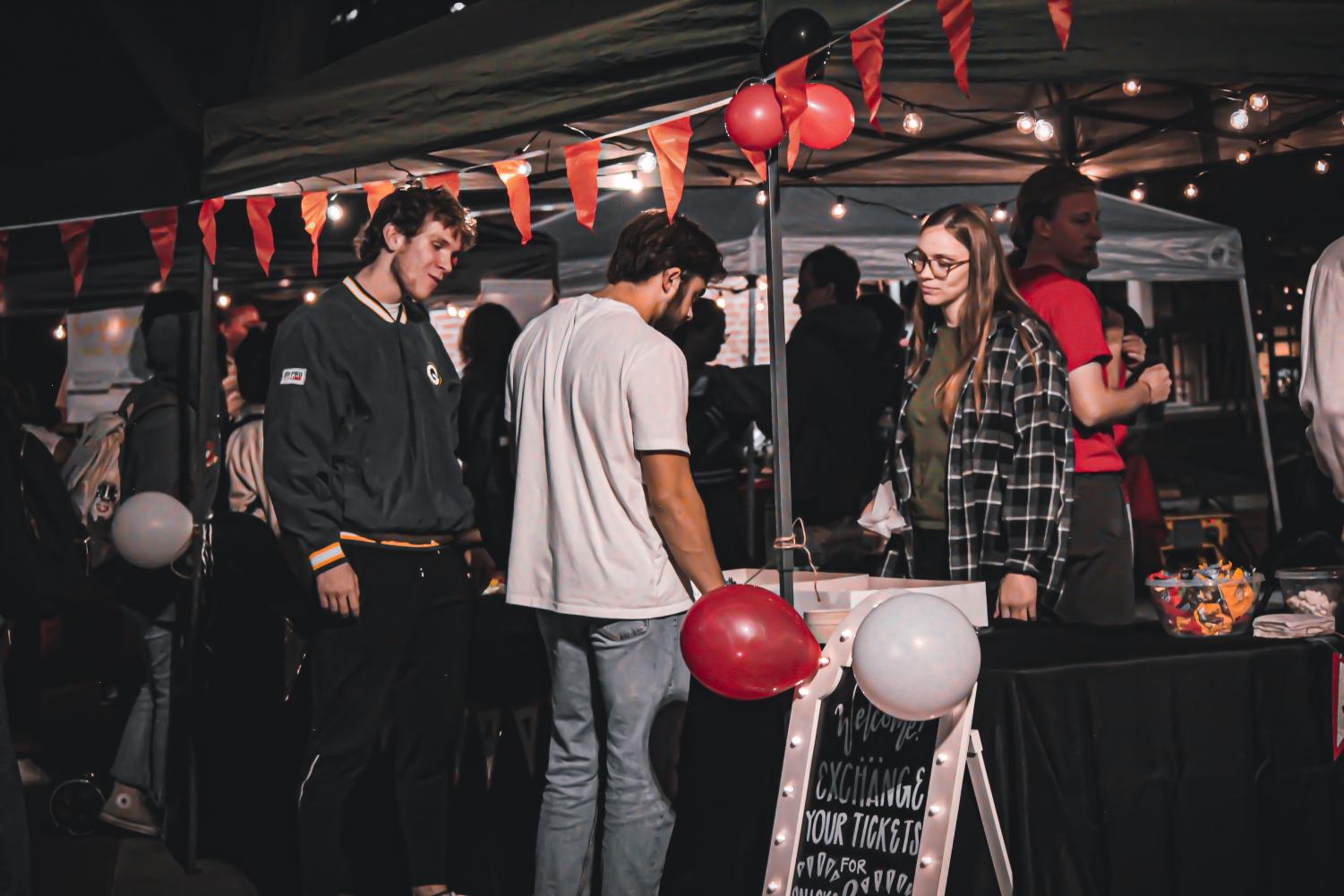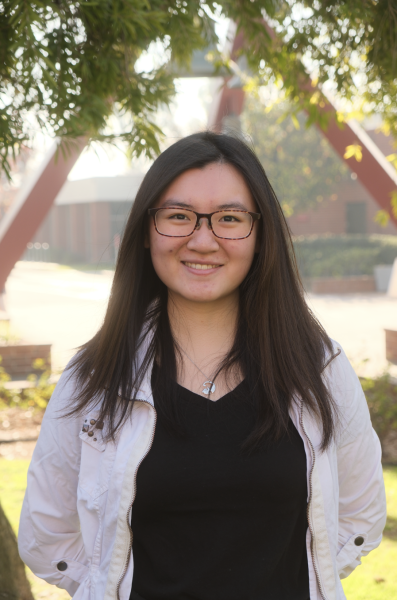Jazz music serenaded students walking up the stairs by Common Grounds Cafe. Booths lined the outside perimeter of Fluor Fountain. Faculty and students alike roamed freely as they carried tickets, bought treats and investigated booths. The jazz musicians riffed and the choir sang as a crowd gathered to enjoy the live music. The evening buzzed with excitement for the Celebration of Student Writing event, hosted by the English department’s writing program.
FROM WRITING TO PRESENTATION
Dr. Christine Watson of the English Writing Program helped arrange and direct CSW. This event was part of the curriculum for a first-year English class, Critical Thinking and Writing.
Students presented the projects they created individually or in groups.
“It’s kind of like a remix of something that they’ve learned. They take what they’ve learned and they turn it into something creative for public audiences,” Watson said.
One booth was titled: Science of Persuasion. Equipped with a colorful spin-the-wheel and several covered bowls, this project shared the different types of persuasive technique.
CSW’s logo, shaped as a triangle, read: Writing, Thinking, and Innovating. “You’re doing some writing, some critical thinking, and then you innovate an idea for an actual audience,” Watson said.
Often, writing is thought of as a process done in a vacuum, isolated from others. Watson explained that this event encourages students to imagine their work as a collaborative activity.
Watson also shared that CSW was designed as a high-impact practice, an active learning practice that encourages deeper learning.
She shared how research showed that students who are able to engage in material beyond the traditional classroom methods — like studying abroad, research ventures with a professor and spending time with a faculty member outside of class — allowed students to flourish more in their learning. “CSW is designed to help students internalize and remember the work they’ve been doing,” Watson said.
INTERACTIVITY
Another booth was called Story Building. Participants rolled a die and wrote short stories based on random prompts — many of which made people laugh.
The interactive aspect of CSW also allowed both students and audience to have an enjoyable time. “It’s supposed to be fun, almost like a carnival or a science fair,” Watson said.
Watson added that students get to receive feedback on their projects as well, furthering their learning experience. “The learning that happens is not necessarily in the investment of the project. That can be part of the learning, but oftentimes the learning happens when it’s over, and they realize, ‘wow, people were really into this,’ or, ‘oh, people didn’t really get it.’ Either way, the students learn. That’s a big component of what we’re doing. We’re allowing them to experiment with an idea,” Watson said.
Last year’s CSW event missed out on the interactive portion due to the COVID-19 situation. “People presented projects, and we did it like a gallery walk rather than interactive,” Watson said. She was happy that this year’s CSW was back to being fully interactive.
A third booth was named Visual Rhetoric, a fun bookmark-making station where one learned about the meaning of colors and their impact, and a booth nearby on the lawn had puppies.
Watson also greatly enjoyed CSW herself. “I think the thing that I enjoy the most is when students say to me, ‘I was really nervous about presenting my work, but then it became really fun! People really enjoyed my work!’” she said. “I think that’s the best part, when students are surprised that they really enjoy presenting at CSW.”












